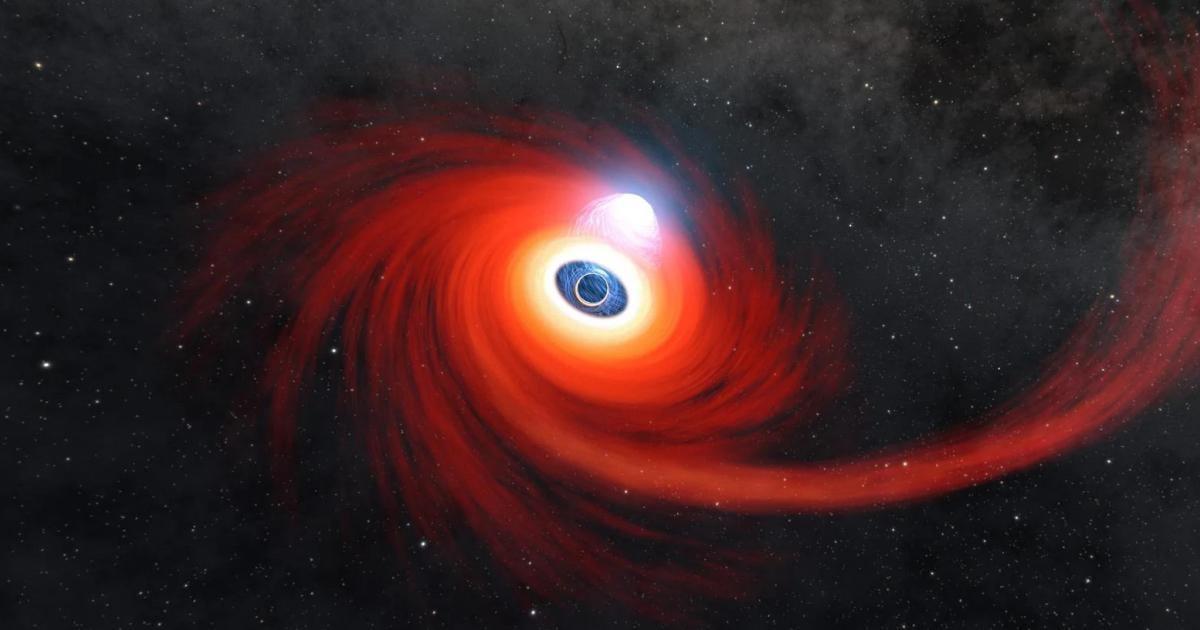The current is Gless 710 It is about 60 light years away from us. The trend is decreasing, because the Sun in the constellation Cygnus is moving towards us at high speed. After 1.3 million years, the distance will be only a few light weeks, in astronomical terms: about 10,000 times the distance between Earth and the Sun. The flight path will take Gliese to the Oort Cloud, the outskirts of our planetary system that is home to countless, perhaps trillions, comets.
Comet billiards
What happens when Gliese hurtles through the comet belt? Previous analyzes assumed that the star's gravity would have little effect on its surroundings. But one New and significantly more complex simulation It paints a completely different picture.
Like the Viennese astronomer Elke Pilate Lohinger Discovered with her team, Gliese will deflect 100 million comets from their orbit and propel them into the vastness of space. This does not mean that everyone will leave our planetary system forever. “Some of them may visit our solar system again after a long time. “Similar to ‘Oumuamua and Borisov,” says Pilat Lohinger in an interview with Ö1. The asteroid ‘Oumuamua was spotted between the Sun and Mercury in 2017. Where it came from is still unknown. It is also possible that it Comet Borisov of interstellar origin was discovered two years later, and was at a distance of three astronomical units (=the distance between the Earth and the Sun) from the Sun.
Potential impacts on the ground
It is possible that some comets would be in close contact with the Solar System from the Oort Cloud if Gliese 710 caused turbulence there with its gravity. The astonishing result of the Pilat-Loehinger calculations is: in 1.3 million years, 4,500 comets will be heading in the direction internal Chasing the planetary system. This “will certainly increase the probability of impacts on the ground,” says the researcher from the University of Vienna.
Specific numbers will only be available after more in-depth analysis – the results have so far only been presented at specialized conferences and have not yet been published. One thing is certain: If such a comet hits Earth, the impact would be “similar to the asteroid impact at the end of the Cretaceous period, which led to the extinction of the dinosaurs,” says Pilar Lohinger.
The objects in the Oort Cloud belong to a class of similar size to Halley's Comet, which, at 15 kilometers in diameter, is certainly a large chunk. What all this might mean for humanity – if it still exists – remains uncertain. “We will never live to see that again,” says Pilar Lohinger. “And maybe that's a good thing.”
However, the landscape will be limited in time. According to new calculations, Gliese 710 is supposed to leave the comet belt again after 64 thousand years and disappear into the vastness of space. It will also be visible from Earth at its closest point to the sun, and is the same size as Jupiter, which now appears in the sky.

“Social media evangelist. Baconaholic. Devoted reader. Twitter scholar. Avid coffee trailblazer.”







More Stories
Why did the project fail? Fntastic responds to fraud allegations
Mapping the Milky Way Galaxy in the infrared spectral range
Synapses: Journey to Jupiter – Is there life on the icy moon? | NDR.de – News